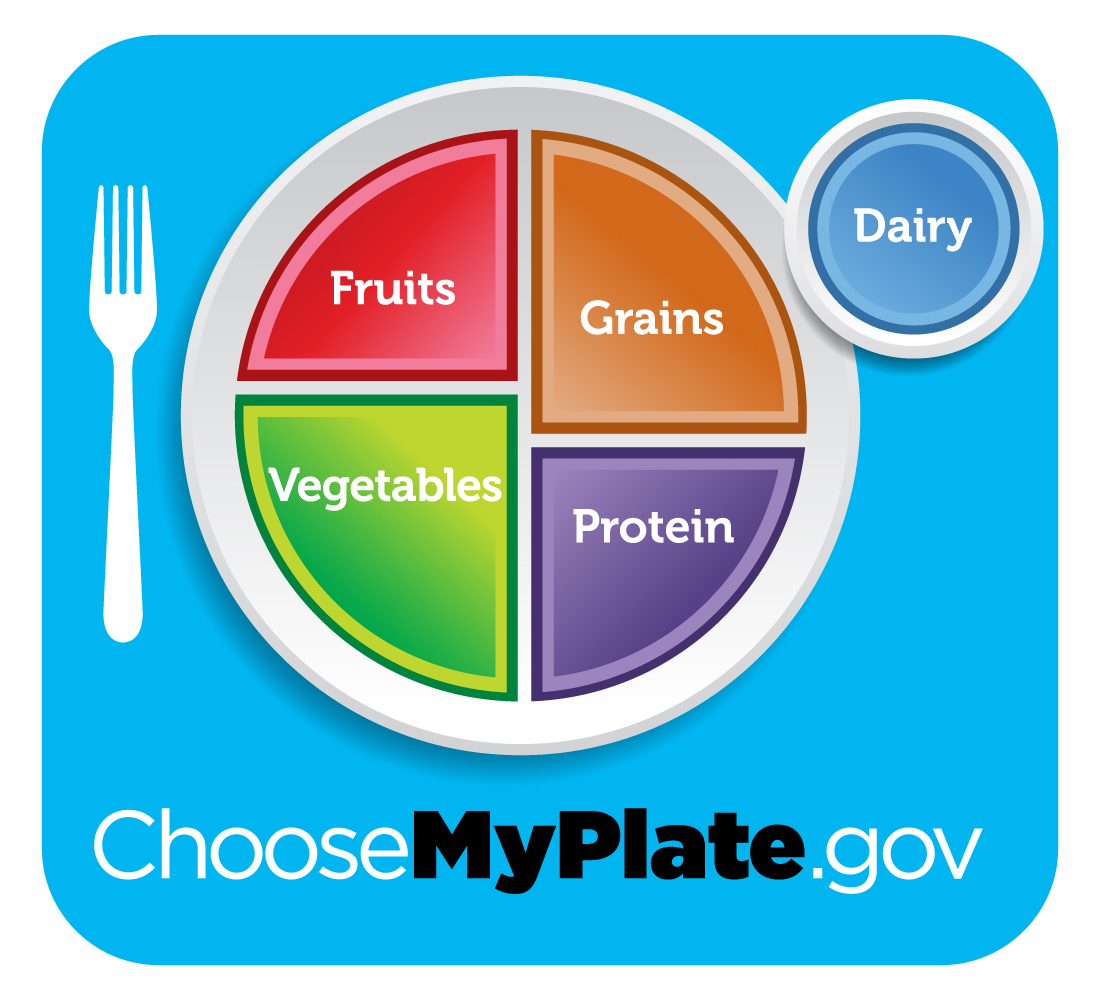Build a Healthy MyPlate
TEXARKANA, Ark. –
Getting enough fruits and vegetables in our diet can be a problem for many Americans. We tend to have larger than recommended portions of proteins and grains, including grains which provide simple carbohydrates instead of the whole grains we need. How can you can make small adjustments to the portions on your plate to get more of what you need without too many calories and without eating food you don’t want to eat?
Make half your plate veggies and fruits. They are full of nutrients and promote good health. Go for those with deep, rich colors. Choose red, orange and dark green vegetables such as tomatoes, sweet potatoes, oranges eggplant and broccoli.
Add a lean protein. Choose protein foods that are lean such as lean beef and pork, or chicken, turkey and beans. Seafood on your plate twice a week should also be included when building a healthy meal.
Include whole grains by looking for the words “100 percent whole grain” or “100 whole wheat” on the food label. Whole grain products provide more nutrition, including fiber, than the refined grains you will find in white bread.
Don’t forget the importance of dairy. Pair your meal with a cup of fat free or low fat milk. They will provide the same amount of calcium and other essential nutrients as whole milk but with less fat and calories. If you don’t drink milk, consider soy milk or include a fat free yogurt or other low fat dairy product.
Avoid extra added fat. Heavy sauces and gravies add fat and calories to what otherwise might be considered a healthy choice. Steamed broccoli is great, but when you cover it in cheese sauce, you have added extra fat and calories. Try other options like a squeeze of lemon or fresh grated Parmesan cheese.
Take your time and savor your food. Eat slowly; enjoy the taste and textures and pay attention to how you feel. Research shows that it takes 20 minutes for your stomach to signal your brain that it is full. Eating quickly may cause you to overeat and not allow you time to know that you are full.
Use a smaller plate to help with portion control. You can finish your entire plate and feel satisfied without overeating.
Take control of your food and avoid eating out as much. When you eat at home, you control the fat, sodium, and calories that are in the food being prepared. If you do eat out, check nutritional information, either on line before you go or with an app. If those options aren’t available, avoid descriptive words such as fried, in sauce, heavy cream, sauté, etc.
Try new foods you have never tried before. Experiment with lentils, kale, bokchoy, and mango. Visit your local farmers market to find new vegetables and fruit that are farm fresh.
Lastly, satisfy your sweet tooth in a healthy way. Indulge in naturally sweet fresh fruit. Serve fresh fruit cocktail or a fruit parfait made with yogurt. For a hot dessert, try baked apples with cinnamon.
Building a healthy MyPlate is easy if you follow some simple rules. When you eat healthier you will feel better and have more energy.
For more information on following MyPlate, contact the Miller County Extension Office, 870-779-3609 or visit us in room 215 at the Miller County Courthouse. We're online at cdue@uada.edu, on Facebook at UAEXMillerCountyFCS/CarlaDue, on Twitter @MillerCountyFCS or on the web at uaex.uada.edu/Miller.
By Carla Due
County Extension Agent - FCS
The Cooperative Extension Service
U of A System Division of Agriculture
Media Contact: Carla Due
County Extension Agent - FCS
U of A Division of Agriculture
Cooperative Extension Service
400 Laurel Street, Suite 215 Texarkana AR 71854
(870) 779-3609
cdue@uada.edu
The Arkansas Cooperative Extension Service is an equal opportunity institution. If
you require a reasonable accommodation to participate or need materials in another
format, please contact your County Extension office (or other appropriate office)
as soon as possible. Dial 711 for Arkansas Relay.
Pursuant to 7 CFR § 15.3, the University of Arkansas System Division of Agriculture
offers all its Extension and Research programs and services (including employment)
without regard to race, color, sex, national origin, religion, age, disability, marital
or veteran status, genetic information, sexual preference, pregnancy or any other
legally protected status, and is an equal opportunity institution.
